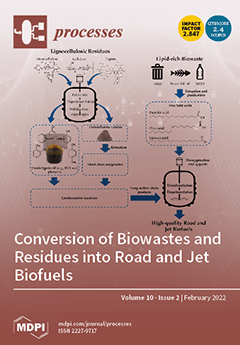Artificial sweeteners are food additives worldwide used instead of fructose or glucose in many diet beverages. Furthermore, diet beverages intake has been increasing every year. Thus, some food agencies should regulate it based on toxicological studies. Debates and controversial results are demonstrated, and
[...] Read more.
Artificial sweeteners are food additives worldwide used instead of fructose or glucose in many diet beverages. Furthermore, diet beverages intake has been increasing every year. Thus, some food agencies should regulate it based on toxicological studies. Debates and controversial results are demonstrated, and authority can revise its decision on the basis of new data reporting toxicological effects since cyclamate has been forbidden in some countries. Therefore, the aim of this study was to report new data about the toxicity of acesulfame-k, aspartame, and cyclamate, which are useful for authority agencies, determining the toxic potential and nutraceutical capabilities of these compounds. The toxicity, antitoxicity, genotoxicity, antigenotoxicity, and life expectancy assays were carried out in
Drosophila as an in vivo model. In addition, in vitro HL-60 line cell was used to evaluate the chemopreventive activity determining the cytotoxic effect and the capability of producing DNA damage due to internucleosomal fragmentation or DNA strand breaks. Furthermore, the methylated status of these cancer cells treated with the tested compounds was assayed as a cancer therapy. Our results demonstrated that all tested compounds were neither toxic nor genotoxic, whereas these compounds resulted in antigenotoxic and cytotoxic substances, except for cyclamate. Aspartame showed antitoxic effects in
Drosophila. All tested compounds decreased the quality of life of this in vivo organism model. Acesulfame-k, aspartame, and cyclamate induced DNA damage in the HL-60 cell line in the comet assay, and acesulfame-k generally increased the methylation status. In conclusion, all tested artificial sweeteners were safe compounds at assayed concentrations since toxicity and genotoxicity were not significantly induced in flies. Moreover, Aspartame and Cyclamate showed protective activity against a genotoxin in
Drosophila Regarding nutraceutical potential, acesulfame-k and aspartame could be demonstrated to be chemopreventive due to the cytotoxicity activity shown by these compounds. According to DNA fragmentation and comet assays, a necrotic way could be the main mechanism of death cells induced by acesulfame-k and aspartame. Finally, Acesulfame-K hypermethylated repetitive elements, which are hypomethylated in cancer cells resulting in a benefit to humans.
Full article





